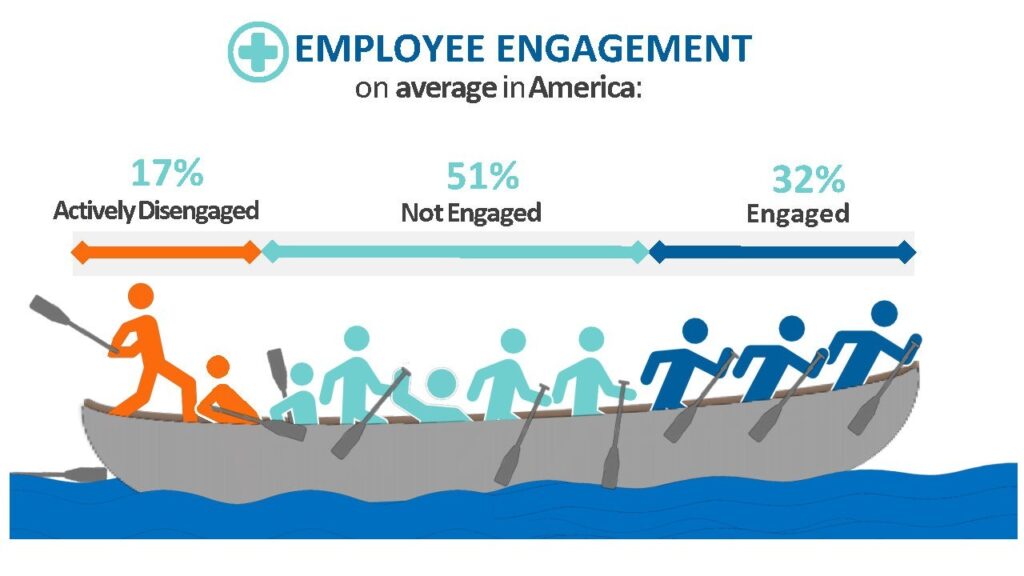
In over a decade of leadership, I have only recently shifted my development focus to that of employee engagement, and in that time have I realized its importance in the workplace. My initial understanding of engagement was basic at best. Only after extensive education and understanding have I moved to understand the complexities of engagement design and implementation.
Engagement can seem like a buzzword generated by people who have no bearing on the course of your organization. It is an easy topic to dismiss, and an easier topic to have never acquainted one’s self with. I would argue that engagement is the single most important pillar of employee retention surpassing even communication. Engagement tools force the presence of communication by default, thereby increasing retention through complementary endeavors. If you shift your focus from trying to figure out how to communicate more effectively and instead into how to engage members of my team you will be paid dividends on productivity.
This graphic, or a variation of it has made the rounds online for years. It is where I started my understanding of the concept when it came up on a PowerPoint in a leadership talk at one of my employers.

Gallup provides the data for this graphic with their yearly survey. After the humor fades there is a staggering realization that 68%, over two-thirds, of an organization are disengaged. With 17% of them creating quantifiable disengagement through active efforts of subterfuge either by intent or neglect. While only 32% are actively engaged and completing the lion’s share of your company’s growth.
So what is there to be done? Engagement Tool Development is one of my most recent passions and one that needs to be better understood and embraced by organizational development structures sooner rather than later. Most recently I created the first version of our company’s first 90-day onboarding roadmap, the first of its kind, to take our touch points of engagement with our team in the first 90 days from two to over ten individualized conversations focused on development, performance, and expectations. While still in its infancy this program sets the stage for planned engagement which compounds communication leading to a higher degree of trust, a lower rate of turnover, and ultimately increased performance.
“Employees who believe that management is concerned about them as a whole person – not just an employee – are more productive, more satisfied, more fulfilled. Satisfied employees mean satisfied customers, which leads to profitability.” – Anne M. Mulcahy
Prompt: How many of your new employees feel heard and represented in the first 90 days? How many of your hiring managers understand the concept of engagement?
Action Item: Sit down with your hiring managers today and ask them what touchpoints look like in the first 90 days. This is a great introduction to retention over a 90-day and beyond period.
In closing, it starts with the hiring managers and ends with the employee. The greater you can increase how an employee feels heard and developed, the greater your results.

